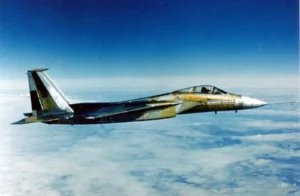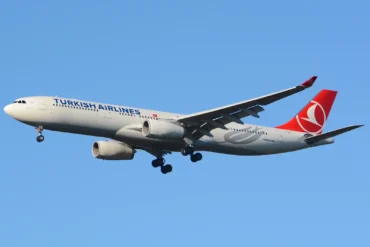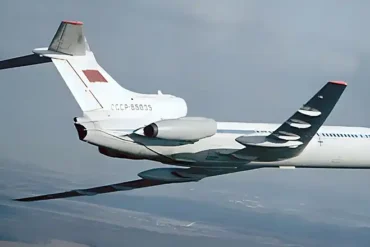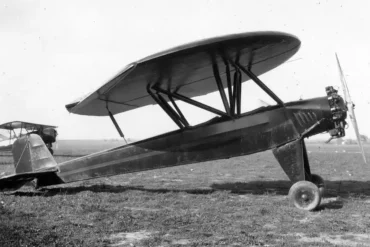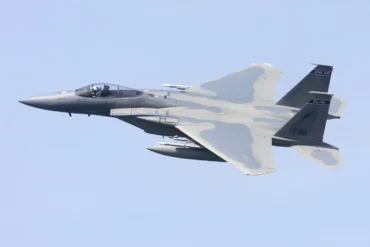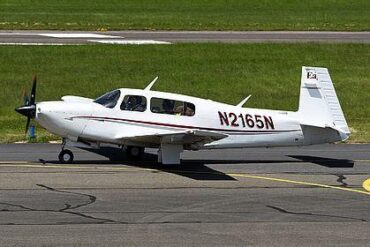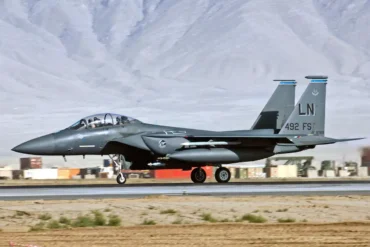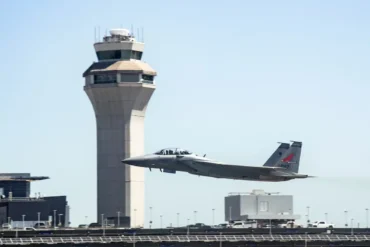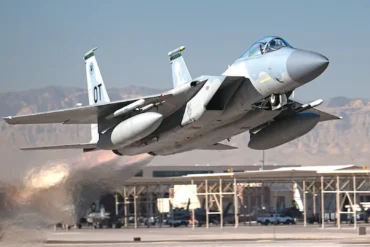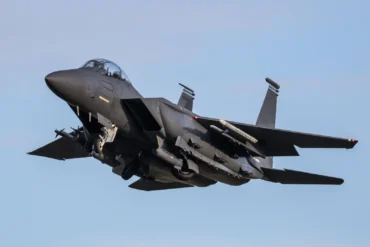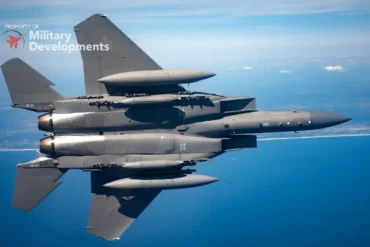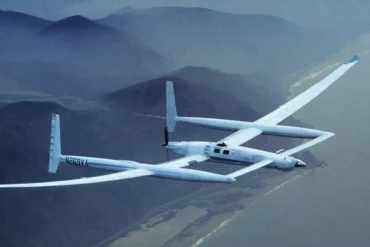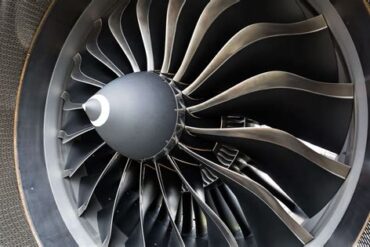In the world of aviation, certain milestones stand as monumental achievements that exemplify human engineering, determination, and skill. Among these, the F-15 Streak Eagle’s remarkable feat of setting eight time-to-climb world records in early 1975 stands out as a testament to aerospace innovation. Over the span of just 17 days, from January 16 to February 1, 1975, three test pilots from the United States Air Force (USAF) piloted the specially modified F-15A to break several records, some of which remain unrivaled to this day.
Background: The Genesis of the Streak Eagle
The Streak Eagle was a single-seat F-15A Eagle, specifically selected for its potential to break speed and altitude records. A unique combination of advanced engineering and rigorous modifications transformed this aircraft into a powerhouse capable of achieving astonishing feats. The aircraft, tail number 72-0119, was initially built as an early production model of the F-15A, a fighter renowned for its unmatched agility, speed, and combat capabilities. However, to break time-to-climb records, it required specific changes to reduce weight and enhance performance.
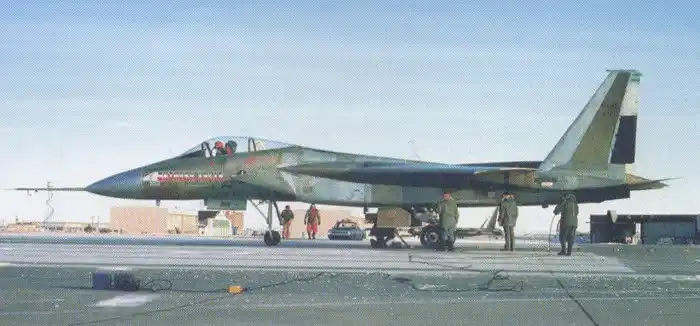
Modifications to the Streak Eagle: Making History Possible
Lightweight Design
To maximize the aircraft’s performance, the Streak Eagle underwent a series of significant modifications. Its design had to be optimized for speed and altitude, which meant that many standard features had to be stripped away. This included removing unnecessary equipment such as the flap and speed brake actuators, the M61A1 Vulcan cannon, and its associated ammunition handling systems. The radar and fire control systems, which were essential for combat operations but unnecessary for record-breaking flights, were also removed, along with various cockpit displays and radios.
One of the most crucial changes involved the reduction in the aircraft’s overall weight. By eliminating these components, the F-15A became approximately 1,800 pounds lighter than its standard production model. This reduction in weight was pivotal for improving the aircraft’s thrust-to-weight ratio, which ultimately reached an impressive 1.4:1, a figure that directly contributed to its extraordinary performance during the record attempts.
Special Equipment for Record Attempts
In addition to stripping down the aircraft’s weight, specialized equipment was installed to support the record-breaking flights. A long pitot boom was mounted to the aircraft’s nose, along with alpha and beta vanes—instruments designed to measure the aircraft’s angle of attack and sideslip during high-speed climbs. The Streak Eagle was also equipped with sensitive accelerometers, critical for recording the aircraft’s acceleration and time-to-altitude data.
For the pilot’s safety, a David Clark Company A/P-225-6 full-pressure suit was added to protect against the extreme conditions experienced at high altitudes. Furthermore, an in-cockpit video camera was installed to capture the pilot’s experience during these high-performance flights. Perhaps most importantly, a hold-down device replaced the fighter’s standard arresting hook to ensure the aircraft remained stationary until brake release.
These adjustments allowed the Streak Eagle to perform at peak efficiency and become a true contender in the race for aviation records.
The Record-Breaking Flights: From Brake Release to the Stratosphere
Setting the Stage: The First Record-Breaking Flight
On January 16, 1975, Major Roger J. Smith, a USAF test pilot assigned to the F-15 Joint Test Force at Edwards AFB, took the Streak Eagle to the skies for its first world record attempt. The mission, launched from Grand Forks Air Force Base, North Dakota, aimed to break the Fédération Aéronautique Internationale (FAI) and U.S. National Aeronautic Association’s (NAAA) time-to-altitude records.
The record was set when the F-15 reached an altitude of 30,000 meters (98,425 feet) in just 3 minutes and 27.8 seconds from brake release. This was a staggering achievement, demonstrating the aircraft’s impressive climb rate and the effectiveness of the modifications made to the Streak Eagle.
The Final Record: A New Height
By February 1, 1975, the Streak Eagle had broken a total of eight world records. The last of these was perhaps the most jaw-dropping. In this final flight, the F-15 climbed to 98,425 feet in just 3 minutes and 27.8 seconds—an extraordinary pace that pushed the aircraft well beyond conventional limits. After reaching this altitude, the aircraft “coasted” to nearly 103,000 feet before beginning its descent. The F-15 had successfully shattered multiple records, cementing its place in aviation history.
The Pilots: Pushing the Limits of Human and Machine
While the aircraft was the centerpiece of these record-breaking flights, it was the skill and bravery of the pilots who made the records possible. The Streak Eagle’s time-to-climb records were set by three accomplished USAF pilots:
- Major Roger J. Smith
- Major W.R. Macfarlane
- Major Dave Peterson

Each pilot played a crucial role in the success of the record attempts. They underwent extensive training and preparation, learning how to handle the Streak Eagle’s stripped-down configuration and how to maximize its performance during each ascent. The close cooperation between the pilots and the engineers who modified the aircraft was essential for ensuring that the Streak Eagle achieved peak performance.
Technological Significance of the Streak Eagle’s Performance
The F-15A’s time-to-climb records demonstrated the incredible potential of modern jet propulsion technology. The Streak Eagle was powered by two Pratt & Whitney JTF22A-25A turbofan engines, capable of delivering up to 23,840 pounds of thrust for short bursts. This power allowed the F-15 to climb vertically at an astounding rate, reaching altitudes that were previously thought to be unattainable for a conventional fighter aircraft.
Furthermore, the aircraft’s advanced aerodynamics, combined with its powerful engines and lightweight configuration, allowed it to achieve such incredible rates of climb. With a thrust-to-weight ratio of 1.4:1, the F-15 could reach new heights of performance, both literally and figuratively.
The F-15A’s Role in the Air Force
While the Streak Eagle’s modifications were designed specifically for record-breaking purposes, the standard F-15A served as the backbone of the U.S. Air Force’s air superiority capabilities for many years. The F-15A Eagle was a twin-engine, all-weather, multirole fighter capable of carrying a variety of weapons, including the M61A1 Vulcan cannon, AIM-7 Sparrow missiles, and AIM-9 Sidewinder missiles. It was designed to excel in air-to-air combat, with exceptional speed, maneuverability, and climb performance.
Although the Streak Eagle’s modifications made it unsuitable for operational use, the data gathered from these record-breaking flights helped engineers refine the F-15’s design and performance. The lessons learned from these flights were invaluable in shaping future generations of fighter aircraft.
Preserving the Legacy: The Streak Eagle at the National Museum of the USAF
Today, the F-15 Streak Eagle resides at the National Museum of the United States Air Force at Wright-Patterson Air Force Base in Ohio. The aircraft has been restored to its iconic natural metal finish, which was originally used to reduce weight during the record-setting flights. To protect it from corrosion, McDonnell Douglas, the manufacturer of the F-15, later applied the standard gray color scheme of operational F-15s.
The Streak Eagle stands as a symbol of both human achievement and technological innovation. It is a reminder of what is possible when cutting-edge design, skilled piloting, and rigorous testing come together. The records it set continue to inspire aviation enthusiasts, engineers, and pilots to this day.
Conclusion: A Milestone in Aviation History
The F-15 Streak Eagle’s achievement in breaking eight time-to-climb world records remains one of the most extraordinary feats in the history of aviation. The aircraft’s lightweight modifications, combined with the exceptional skill of its pilots, made it possible to achieve unprecedented climb rates and set new standards for jet performance. The legacy of the Streak Eagle continues to influence modern aerospace technology and serves as a benchmark for future advancements in fighter aircraft design and engineering.
This historic moment in aviation reminds us of the relentless pursuit of excellence and the importance of pushing the boundaries of what is possible in aerospace technology. The F-15 Streak Eagle’s records may have been surpassed by newer, more advanced aircraft, but its place in aviation history remains firmly intact.
